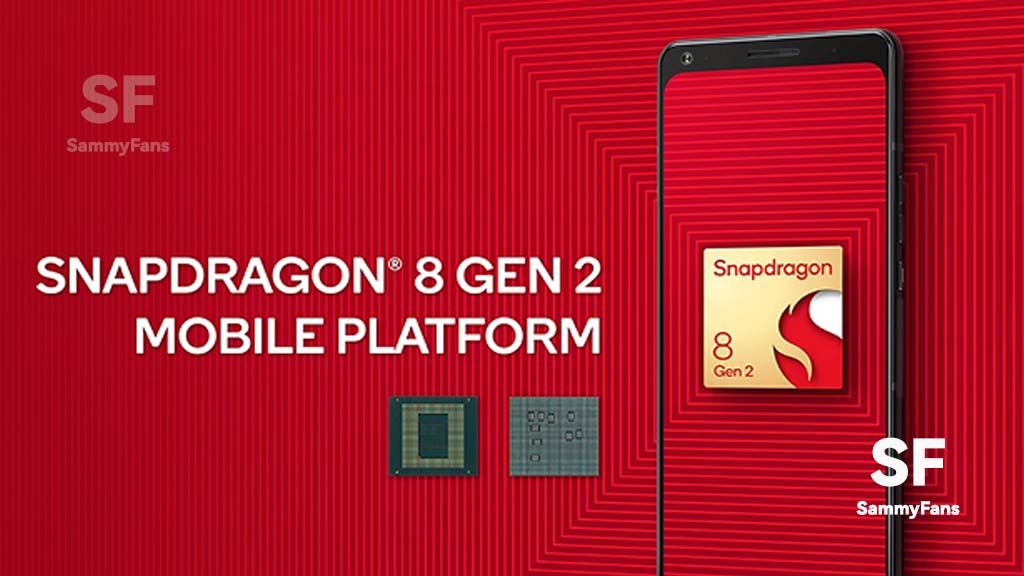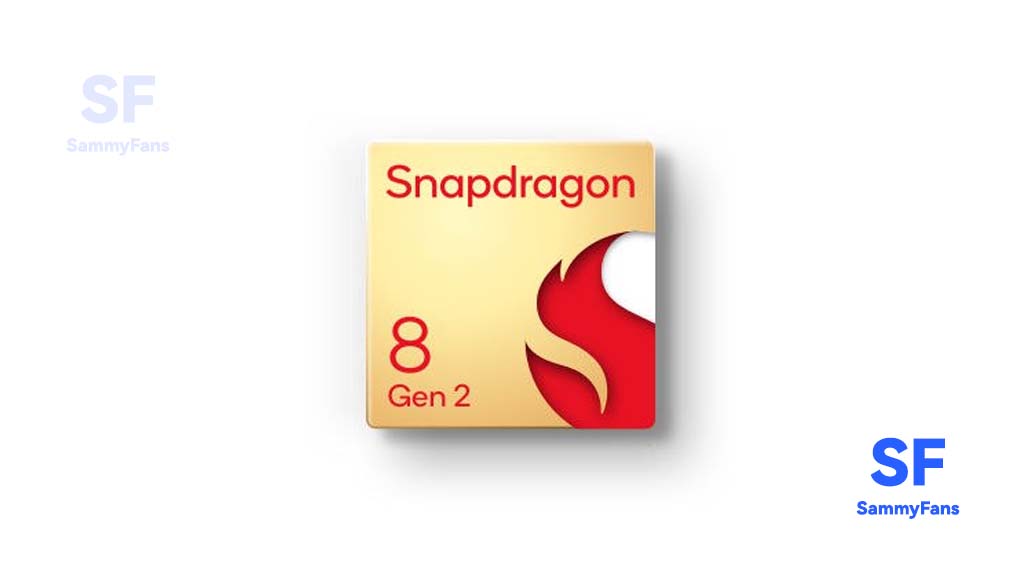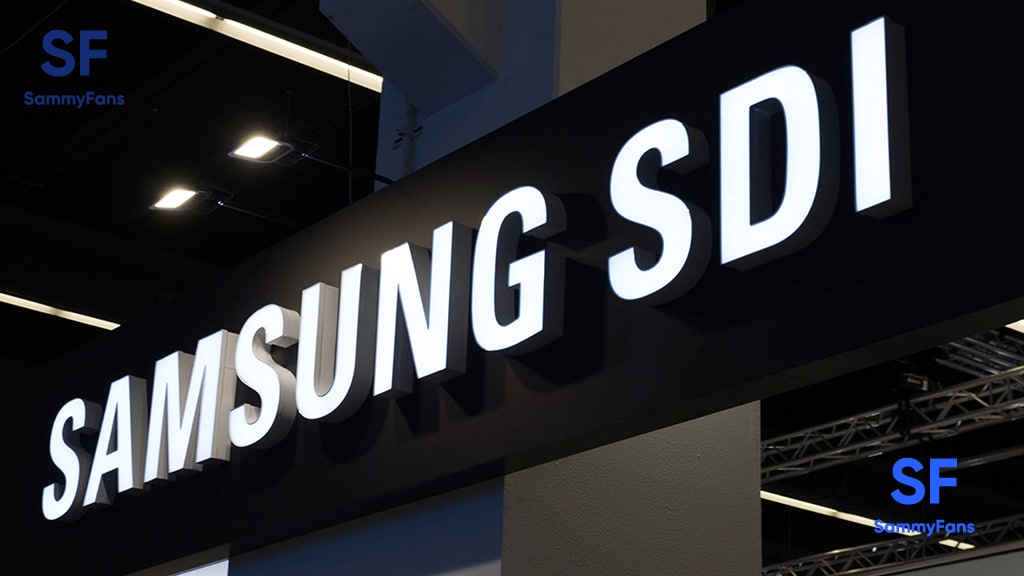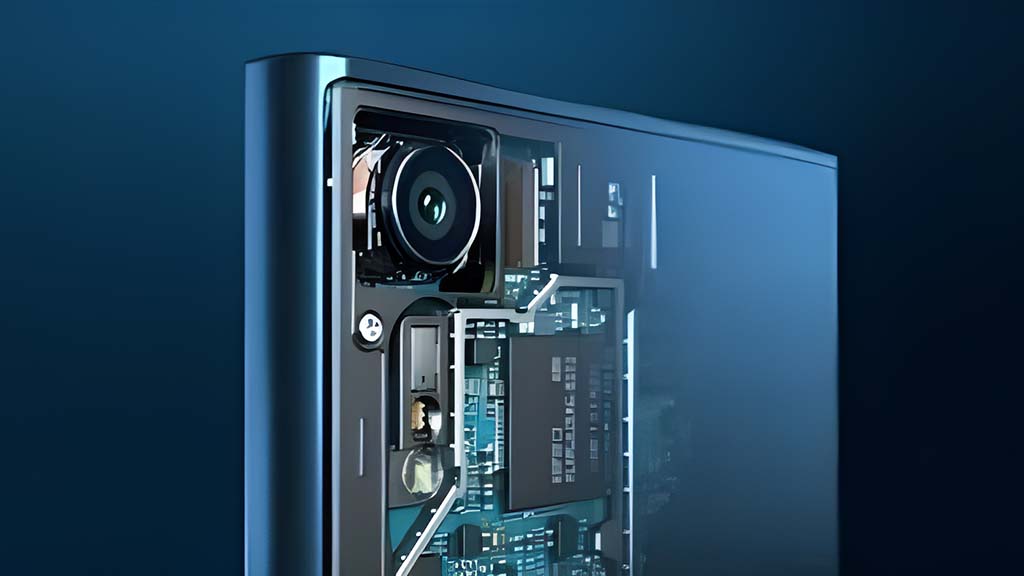News
Qualcomm unveils Snapdragon 8 Gen 2 SoC with Wi-Fi 7, smarter image processing and more

Today, Qualcomm officially unveiled the new Snapdragon 8 Gen 2 processor for 2023’s flagship smartphones. The new-gen mobile platform comes with the most advanced features and technologies to provide premium smartphone users with the best performance.
The new Snapdragon 8 Gen 2 mobile platform focus on better and more efficient performance for AI-related tasks. It has a new modem designed for optimal performance from 5G networks and supports Wi-Fi 7 and gets smarter image processing.
Follow Sammy Fans on Google News
Furthermore, compared to the Snapdragon 8 Gen 1, the Gen 2’s Kryo CPU includes a prime core based on the Arm Cortex-X3 clocked at 3.2GHz. It carries four performance cores clocked at 2.8GHz (one more than last year) and three efficiency cores clocked at 2.0GHz – all between 200 and 300MHz faster than last year’s hardware.
Join SammyFans on Telegram
The company claims that the CPU of this processor is up to 35% faster than the previous generation, with up to 40% power savings. Similarly, the Adreno GPU is 25% faster with 45% better power efficiency. The entire chip is built on a 4nm process, just like the Gen 1.

Qualcomm Snapdragon 8 Gen 2:
Groundbreaking AI:
The AI Engine includes the Qualcomm Hexagon processor, with revolutionary micro tile inference and faster tensor accelerators, for up to 4.35×1 faster AI performance than its predecessor. It further supports INT4 precision that boosts performance-per-watt by up to 60% for continuous AI inference.
Champion-level gameplay:
The new-gen Qualcomm Adreno GPU drives up to 25% faster graphics rendering. Its full arsenal of Snapdragon Elite gaming features adds unmatched realism, including the industry standard for real-time hardware-accelerated ray tracing, which delivers authentic lighting, reflections, and illumination for desktop-level gaming experiences.
Ingenious capture:
The Qualcomm Spectra equips an 18-bit Triple Cognitive ISP and an Always-Sensing Camera with AI. It intelligently enhances every Snapdragon site experience. At the same time, capture incredible shots with up to 200MP single capture.
Accelerated performance:
The Kryo CPU delivers 35% faster performance and 40% better power efficiency. Thanks to brand-new micro-architecture, which converts an efficiency core into an additional performance core to reach peak multi-threaded performance with speeds of up to 3.2GHz.

Breakthrough 5G performance:
The Snapdragon X70 5G Modem-RF System is equipped with a Qualcomm 5G AI processor, Qualcomm Smart Transmit, and Qualcomm 5G PowerSave for the latest advancements in speed, coverage, and latency, plus range and link strength.
Record-breaking Wi-Fi 7:
The Qualcomm FastConnect 7800 is the first commercial Wi-Fi 7 with High Band Simultaneous (HBS) multi-link in mobile connectivity systems. The FastConnect 7800 delivers VR-class low-latency, up to 5.8 Gbps, more than twice the speed of Wi-Fi 6.
It also supports Dual Bluetooth, LE Audio and Snapdragon Sound with spatial audio for immersive audio experiences.
Samsung Galaxy S23 Snapdragon 8 Gen 2:
The Snapdragon 8 Gen 2 processor for all next year’s flagship smartphones has been announced but it’s likely that the company is developing another variant of the chipset that will be exclusive to Samsung Galaxy S23 series smartphones. Read complete story…
News
Samsung no longer interested in EV battery business in the US?

Samsung could shift its investment from the EV battery business in the US. The company plans to adjust its investment in ESS from EVs due to a sluggish market. The move comes after low demand for EVs, particularly bikes, and growing demand for ESS.
TheElec reports that Samsung eyeing the growing demand for ESS (energy storage systems) in the US. North America’s largest power company NextEra Energy could be awarding Samsung with a potential 1 trillion won ESS order.
Samsung is investing in converting its EV battery pack production line in Michigan, US. The electric bike battery pack line will be dismantled and converted for ESS use. The investment is expected to begin as early as the fourth quarter.
- The ESS battery pack line will be located in Factory 1, where a battery pack line for Harley-Davidson is currently in operation.
- Factory 2 primarily produces battery packs for Stellantis PHEVs, such as the Jeep Wrangler 4xe and Grand Cherokee 4xe.
The Korean tech giant is pursuing a 1 trillion won order for ESS batteries from NextEra Energy. The order is estimated to be around 5GWh. The company has started accelerating its penetration into the ESS market since last year with its Battery Box.
News
Samsung exploring sensor-shift OIS camera tech for Galaxy phones

Samsung is exploring advanced sensor-shift image stabilization (OIS) camera tech for future Galaxy phones. The company recently filed a patent application related to image stabilization technology for mobile devices in South Korea.
The latest Samsung patent suggests work on the sensor-shift image stabilization (OIS) camera is underway. However, Apple iPhone-like sensor shift camera tech is far from arriving on Samsung’s Galaxy smartphones.
The patent entitled “Actuator for optical image stabilization and camera module including the same” describes how less force is required to stabilize the sensor itself. This allows for a more precise correction of the sensor position.
The patent document shows that Samsung is continuing to develop its ideas and methods for sensor-shift image stabilization. The absence of such cameras is not a sign that the company has abandoned the idea.

Samsung has been working on sensor-shift image stabilization for years. The company aims to upgrade the Galaxy camera capabilities in the future. The sensor-shift stabilization offers a sharper image by moving the camera sensor.
Previously, patents related to sensor-shift telephoto camera surfaced. However, the Korean tech giant hasn’t commercialized the technology. The patent was published recently, but doesn’t mean we will be seeing this upgrade in the Galaxy S25 series.
The development suggests that Samsung won’t include it on Galaxies till an advanced variant evolves. As the exploration continues, sensor-shift OIS feature remains in hope for the future of Galaxy smartphone segment.
News
Samsung crafting mixed-reality smart glasses with Qualcomm, Google

Samsung officially confirmed its teaming up with Qualcomm and Google for XR devices. Now, Qualcomm CEO revealed that the company is working with Samsung and Google to develop mixed-reality smart glasses.
According to the info, Samsung is working on portable mixed-reality smart glasses in collaboration with Qualcomm. Not XR headset, the company’s first extended reality product could be smart glasses with AI for new experiences.
Qualcomm CEO Cristiano Amon shared new details about Samsung’s upcoming XR product. In an interview to CNBC, Amon confirmed the collab with Samsung will result in “a new product” that offers “new experiences.”
Beyond that, he hinted that this product will likely be a pair of XR smart glasses, not a headset. Just opposite to Apple’s approach, Samsung and Qualcomm aimed to create XR smart glasses that would be portable and easy to carry around.
“I want everyone who has a phone to go buy companion glasses to go along with it,” Amon said. “We need to reach a point where wearing smart glasses feels no different from wearing regular glasses or sunglasses. Only then can we achieve true scale,” he added.
The XR smart glasses could debut later this year, featuring artificial intelligence. Samsung and Qualcomm reportedly aiming to make XR glasses mainstream, while Google could support them with optimized software.
Following the trend, the XR smart glasses could pack on-device AI capabilities. Some AI features will run directly on the device, others on the phone, and certain tasks will require cloud processing – unlocking “a whole new set of experiences.”

Nurphoto | Nurphoto | Getty Images












